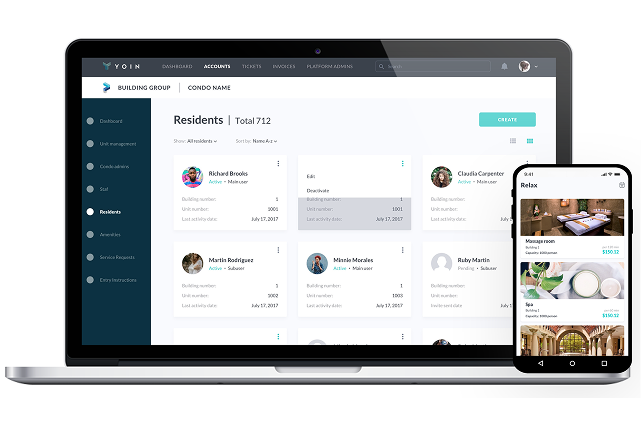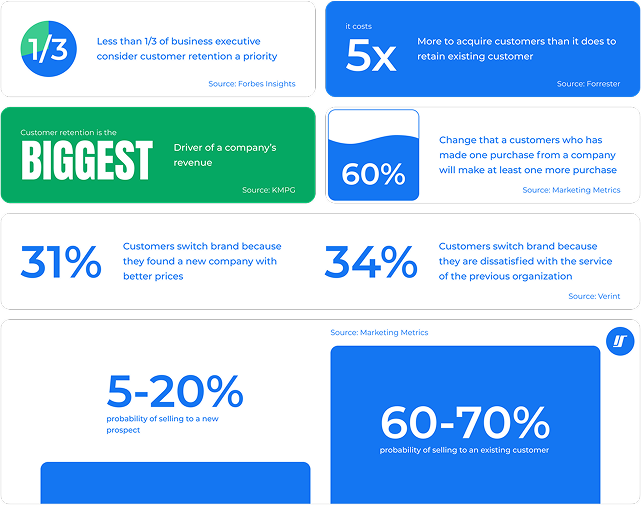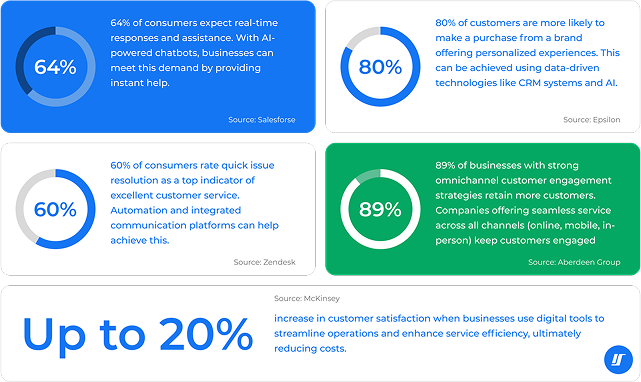Thinking about outsourcing your next big software project? If yes, we are here to help you!
In this era, companies outsource programming to improve efficiency, focus on core tasks, and save resources, including budget costs, by leveraging programming outsourcing solutions. According to savvy business owners, it is not just a way to build top-quality software solutions, but outsourcing provider can also save many business resources, including budget costs.
Outsourcing brings great benefits to your business, but there are some challenges and issues when it comes to managing outsourcing partnerships. This article addresses them to help you evaluate whether dedicated software development is right for business growth for your company.
What is Programming Outsourcing?
Programming outsourcing is the practice of hiring external software developers, or companies to design, develop, and maintain software applications, websites, or other digital products. This approach allows businesses to access specialized skills, reduce costs, and increase productivity. By outsourcing programming tasks, companies can focus on their core activities while leaving the technical aspects to experts. This not only streamlines operations but also ensures that the software development is handled by professionals with the right expertise and experience.
Why Do Companies Outsource Computer Programming Services?
Companies hand over their core business operations to a specialized third party vendor to streamline them, increase profitability, strengthen market positions, and improve customer experience. By outsourcing, companies gain access to a skilled programming workforce that can handle complex projects and deliver high-quality results. In addition to programming, companies often outsource other IT related services-related services to enhance efficiency and leverage expert skills. They prefer entrusting a service to a third party to save time and budget costs and dedicate more resources to strategic business functions.
Types of Outsourcing
There are several types of various outsourcing vendors, each catering to different needs and preferences:
- Offshore outsourcing: This involves hiring developers from another country, often in a different time zone, to work on a project. It is typically chosen for its cost-effectiveness and access to a global talent pool.
- Onshore outsourcing: This type involves hiring developers from the same country or region. It offers the advantage of easier communication and cultural alignment, though it may be more expensive than offshore options.
- Nearshore outsourcing: This involves hiring developers from a nearby country or region. It strikes a balance between cost savings and ease of communication, often sharing similar time zones and cultural similarities.
- Outsourcing to a dedicated team: This model involves hiring a team of developers who work exclusively on your project. It provides a high level of control and integration, making it feel like an extension of your in-house team.
Each type of software outsourcing has its pros and cons, and the choice depends on the specific needs and goals of your project, making software development outsourcing a versatile option.
Outsourcing Models
When it comes to outsourcing programming services, there are several models to choose from, each catering to different project needs and business goals. Two popular outsourcing programming models are the Dedicated Team model and the Time and Material model.
Dedicated Team and Time and Material Models
Dedicated Team Model
The Dedicated Team model involves hiring a team of developers who work exclusively on your project. This model is ideal for long-term projects that require a high level of commitment and collaboration. With a dedicated team, you can expect:
- A team of experienced developers who are familiar with your project requirements
- A high level of commitment and collaboration from the team
- Flexibility to scale up or down as needed
- A fixed monthly fee for the team’s services
This model is particularly beneficial for complex, ongoing projects where continuity and deep understanding of the project are crucial. It allows businesses to build a cohesive team that feels like an extension of their in-house staff, fostering better communication and alignment with business goals.
Time and Material Model
The Time and Material model involves paying developers for the time they spend on your project. This model is ideal for short-term projects or projects with uncertain requirements. With the Time and Material model, you can expect:
- A flexible pricing structure that only charges for the time spent on your project
- A team of developers who can work on your project on an as-needed basis
- The ability to scale up or down quickly as needed
- A high level of transparency and control over the project’s budget
This model is perfect for projects where the scope is not fully defined or may change over time. It offers the flexibility to adapt to new requirements and ensures that you only pay for the actual benefits of outsourcing work done, making it a cost-effective solution for dynamic projects.
Both models have their pros and cons, and the choice ultimately depends on your project’s specific needs and requirements. By understanding these models, you can make an informed decision that aligns with your business objectives and your project development goals.
Offshore Software Programming Outsourcing
Offshore software outsourcing is the most common type of IT outsourcing. Most of the companies who opt for it prefer to delegate their software development projects to companies outside their countries to save cost and time.
Benefits Of Offshore Programming Outsourcing
- Huge savings on employees’ salaries and infrastructure. The most significant reason for going with outsourcing is cost-efficiency. There is no need for enterprises to hire and support an in-house team of professionals when they can access talent all over the world. There are also significant differences in the cost of facilities or equipment when it comes to comparing the two, with programming outsourcing being less heavy on the company’s budget.
- Access to the talented pools of developers. The best part about offshore programming outsourcing is that it gives you full access to highly-qualified and experienced developers around the world that may be hard to find in your country (or expect higher salaries).
- Time zone benefit. Outsourcing companies work according to your rules, so different time zones are never an obstacle.
- Less risk. Risks can be avoided if the project is outsourced to a company with a reliable project management system and time-tested app development process.
- Shared responsibility. When you decide to outsource a certain programming task, all parties agree on what has to be done and the risk management is shared among them. Managing the risks produced by the development team can be handled better by the offshore team as it is a major part of their business.
- Innovation and quality. As per your requirements, you can approach highly-qualified professionals who follow the highest standards in software development. They operate at high levels of reliability and efficiency and deliver work with minimum error rate.
- Almost in-house. If you wish to grow your business globally and cannot find enough qualified people in your country, outsourcing programming services provides you with a skilled team to grow rapidly in a short timeframe.
Cost Of Outsourcing Programming
As it is really hard to shortlist top outsourcing companies worldwide, we have picked up the most popular destinations all over the globe, whose programming outsourcing companies deliver solid results across technology areas while helping you stay cost-efficient. By hiring an outsourced team of developers, companies can significantly reduce costs while maintaining high productivity levels. Among European countries, Ukraine is known as the best destination to outsource programming projects. The tech experts here expect salaries of around $27,00-$30,000 per year. Poland is another European country housing three major software development centers where Polish programmers earn $12,000-$40,000 annually.
Famous Companies that Outsource Programming
Many renowned companies outsource programming services to stay competitive and innovative in the market. Here are some notable examples coding outsourcing companies:
- Google: Google outsources programming services to companies like Accenture and Infosys, allowing it to focus on its core business while leveraging external expertise for various projects.
- WhatsApp: WhatsApp has outsourced programming services to companies like IBM and Oracle to develop and maintain its messaging platform, ensuring it remains robust and scalable.
- Alibaba: Alibaba collaborates with companies like Microsoft and Amazon for its programming needs, enhancing its e-commerce platform with cutting-edge technology and expertise.
- Slack: Slack relies on outsourcing programming services to providers like AWS and Google Cloud, ensuring its communication platform is reliable and continuously improved.
These companies outsource programming services to development companies:
- Save costs and increase efficiency
- Access specialized skills and expertise
- Focus on their core business and strategic initiatives
- Improve their competitive advantage in the market
By outsourcing programming tasks, these industry leaders can innovate faster, reduce operational costs, and maintain a competitive edge, demonstrating the strategic value of outsourcing programming projects in the tech industry.
How to Outsource Programming Companies
There are several ways to find a programming outsourcing partner. When selecting a programming outsourcing company, it is crucial to ensure effective communication and collaboration, especially when managing teams across different time zones. First, you can use ratings of research and consulting firms. The Washington-based Clutch is a good example. These companies provide comprehensive and concise ratings across many software and technology areas and most countries. Another great option is word-of-mouth advice: ask about your business acquaintances, they may have had similar former project managers or someone to recommend. This way, you will get front-row feedback outlining the real advantages and disadvantages of a potential partner.
How to Get Started with Outsourcing Programming
To get started with outsourcing programming, follow these steps:
- Define your project requirements: Clearly outline the scope, goals, and objectives of your project. This includes detailing the features, functionalities, and expected outcomes.
- Choose an outsourcing model: Decide which type of outsourcing model best suits your needs, such as time and materials, fixed price, or dedicated team. Each model has its own advantages depending on the project’s complexity and budget.
- Select an outsourcing partner: Research and choose a reputable outsourcing company that has experience in your industry and technology stack. Look for partners with a proven track record and positive client feedback.
- Establish communication channels: Set up regular communication with your outsourcing partner to ensure smooth collaboration and progress tracking. Use tools like video calls, project management software, and instant messaging to stay connected.
- Agree on a contract: Sign a contract that outlines the scope, timeline, budget, and expectations for the project. Ensure that all terms are clear and mutually agreed upon to avoid misunderstandings later.
What Tasks Can Outsourcing Cover?
Outsourcing can cover a wide range of tasks, including:
- Software development: Designing, developing, and testing software applications tailored to your business needs.
- Mobile app development: Creating mobile apps for Android and iOS devices, ensuring they are user-friendly and functional.
- Web development: Building and maintaining websites, e-commerce platforms, and web applications that are robust and scalable.
- UI/UX design: Creating user interface and user experience designs that enhance the usability and appeal of software applications and websites.
- Quality assurance and testing: Testing and ensuring the quality of software applications and websites to deliver a bug-free and reliable product.
- Maintenance and support: Providing ongoing maintenance and support for software applications and websites to ensure they remain up-to-date and functional.
How to Choose the Best Outsourcing Partner
To choose the best name outsourcing services partner, consider the following factors:
- Experience and expertise: Look for a partner with experience in your industry and technology stack. Their expertise will ensure they understand your project requirements and can deliver high-quality results.
- Portfolio and case studies: Review the partner’s portfolio and case studies to assess their quality of work. This will give you an idea of their capabilities and the types of projects they have successfully completed.
- Communication and collaboration: Ensure that the partner has a clear and transparent communication process. Effective communication is crucial for the success of any outsourcing project.
- Pricing and budget: Compare prices and budgets from different partners to find the best value. Make sure the pricing structure aligns with your budget and project requirements.
- Reviews and testimonials: Check online reviews and testimonials from previous clients to assess the partner’s reputation. Positive feedback from other clients can provide confidence in their reliability and performance.
By considering these factors, you can choose an outsourcing partner service provider that meets your needs and helps you achieve your goals.
The Importance of Relationships in Outsourcing
Building Trust and Collaboration
Building trust and collaboration is crucial when outsourcing programming services. A strong relationship between the client and project management tools the outsourcing company can lead to numerous benefits, including:
- Better communication and understanding of project requirements
- Increased trust and confidence in the outsourcing company’s abilities
- Improved collaboration and teamwork
- Higher quality deliverables and faster time-to-market
- Increased cost savings and efficiency
To build trust and collaboration, it’s essential to:
- Establish clear communication channels and protocols: Regular updates and open lines of communication help ensure everyone is on the same page.
- Set clear expectations and goals for the project: Defining what success looks like helps align efforts and measure progress effectively.
- Foster a culture of transparency and openness: Encouraging honesty and openness can prevent misunderstandings and build a stronger partnership.
- Encourage collaboration and teamwork: Promoting a collaborative environment where ideas and feedback are freely exchanged can lead to better outcomes.
- Provide regular feedback and updates: Continuous feedback helps improve processes and ensures the project stays on track.
By building trust and collaboration with most outsourcing companies, you can ensure a successful outsourcing experience that meets your project’s needs and requirements. A strong relationship with your outsourcing partner can lead to better project outcomes, increased efficiency, and a more enjoyable working experience for both parties.
Source link

















